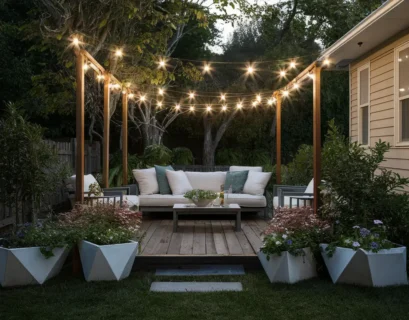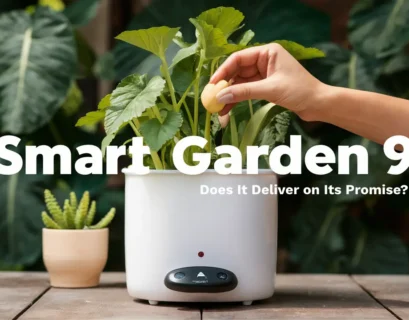Gardening can be a rewarding, therapeutic hobby, but getting those plants to flourish takes a bit of know-how! Whether you’re aiming for a lush Italian garden feel or something inspired by the charm of Hudson or Sayen House and Gardens, knowing the right hacks can make all the difference. Here are our Top 20 Gardening Hacks for Happy and Thriving Plants—a guide to making your green spaces healthy, vibrant, and pest-free.
Let’s dive into these simple, time-tested tricks to transform your garden into a lush, blooming haven.
Top 20 Gardening Hacks
- Use Coffee Grounds or Tea leaves for Soil Enrichment
- Eggshells as Natural Pest Control
- Grow Companion Plants for Natural Protection
- DIY Composting for Nutrient-Rich Soil
- Bananas for Blooms
- Reuse Rainwater for Watering
- Epsom Salt for Greener Leaves
- Newspaper Mulching for Weed Control
- Use Vinegar to Keep Ants Away
- Recycle Your Plastic Bottles for DIY Watering
- Use Baking Soda for Sweeter Tomatoes
- Stick to Morning Watering
- Aloe Vera for Root Growth
- Practice Crop Rotation to Avoid Soil Exhaustion
- Cinnamon as a Natural Fungicide
- Use a DIY Trellis for Vertical Gardens
- Keep Slugs at Bay with Beer Traps
- Milk Spray for Fungal Issues
- Plant Herbs for Natural Pest Control
- Use Mirrors to Reflect Light in Shady Areas
From keeping pests away to extending the life of your cut flowers, these tips will have your flowerbeds and veggie patches flourishing!
1. Use Coffee Grounds or Tea leaves for Soil Enrichment
Coffee grounds or tea are an excellent source of nitrogen, a nutrient that plants need to thrive. Spread used coffee grounds around acid-loving plants like tomatoes and roses. It’s a trick many avid gardeners in places like Westbury Gardens swear by!
2. Eggshells as Natural Pest Control
Crushed eggshells can keep slugs and other soft-bodied pests at bay. Sprinkle them around your plants to create a barrier. Plus, eggshells add a touch of calcium to the soil—a win-win!
3. Grow Companion Plants for Natural Protection
Some plants are natural friends in the garden. Planting basil with tomatoes, for instance, can improve flavor and deter pests.
This is a common practice in traditional Italian gardens where basil and tomatoes thrive together.
4. DIY Composting for Nutrient-Rich Soil
Composting doesn’t require a fancy setup. Simply pile up kitchen scraps like vegetable peels and garden waste, and let nature take its course.
Adding compost to your soil is like giving your plants a gourmet meal, making this one of the Top 20 Gardening Hacks for Happy and Thriving Plants.
5. Bananas for Blooms
Bury banana peels near flowering plants like roses. The potassium in bananas is key for blooms, ensuring you get vibrant flowers that could rival those at Texas Discovery Gardens.
6. Reuse Rainwater for Watering
Install a rain barrel to collect water. Rainwater is naturally soft and free of chemicals like chlorine, which is better for plants and helps them grow like the lush landscapes of Hudson Gardens.
7. Epsom Salt for Greener Leaves
Mix a tablespoon of Epsom salt with water and spray it on plant leaves. The magnesium in Epsom salt promotes lush green foliage—perfect for creating that iconic, vibrant look of a beautiful flow garden.
8. Newspaper Mulching for Weed Control
Lay newspaper sheets around plants to keep weeds down and retain soil moisture. This eco-friendly hack helps your plants get all the nutrients they need.
9. Use Vinegar to Keep Ants Away
Spray a mix of water and white vinegar around garden areas to repel ants. It’s a natural, affordable way to avoid harsh chemicals and keep your garden pest-free.
10. Recycle Your Plastic Bottles for DIY Watering
Cut the bottom off a plastic bottle and bury it near plant roots. Fill it with water, and voilà—you’ve got a slow-drip irrigation system. This is great for busy gardeners who can’t water every day.
11. Use Baking Soda for Sweeter Tomatoes
A sprinkle of baking soda around the base of tomato plants can make the fruit taste sweeter. It’s a tip inspired by gardener manhwa where even small adjustments make a big difference.
12. Stick to Morning Watering
Watering in the morning reduces the chance of mildew and allows plants to absorb water before the heat of the day. Morning watering is especially effective for gardens with heavy moisture needs, like those in Prospect Lefferts Gardens.
13. Aloe Vera for Root Growth
Soak seeds in a bit of aloe vera gel before planting. The enzymes in aloe stimulate growth, giving seedlings a head start.
14. Practice Crop Rotation to Avoid Soil Exhaustion
Rotating your plants each season prevents soil depletion and keeps pests from settling in. This is especially useful in vegetable gardens, where crops like tomatoes and peppers can strain the soil.
15. Cinnamon as a Natural Fungicide
Dust cinnamon powder around plants to deter fungus and prevent seedlings from damping off. This trick keeps your soil healthy and your plants safe.
16. Use a DIY Trellis for Vertical Gardens
Space is precious, and vertical gardening is a great way to maximize it. Construct simple trellises for climbing plants like beans and cucumbers.
17. Keep Slugs at Bay with Beer Traps
Fill a shallow dish with beer and place it near plants. Slugs are attracted to beer, fall into the trap, and won’t bother your plants.
18. Milk Spray for Fungal Issues
Spraying a diluted milk solution on leaves can prevent mildew and other fungal infections. This simple solution will keep your plants healthy without harsh chemicals.
19. Plant Herbs for Natural Pest Control
Plant pest-repelling herbs like rosemary and thyme around your garden. The strong scents keep unwanted insects away while adding flavor to your culinary efforts.
20. Use Mirrors to Reflect Light in Shady Areas
Strategically placing mirrors in your garden can reflect sunlight to plants in shady spots. This hack is particularly useful in partially shaded gardens like those at Sayen House and Gardens.
Remember: While some of these tips offer quick fixes, natural and organic gardening methods are generally more sustainable in the long run. Test these hacks in a small area first and always prioritize the health of your plants.
FAQs About the Top 20 Gardening Hacks for Happy and Thriving Plants
Q: Can I use coffee grounds for all plants?
A: Not all plants enjoy coffee grounds. Acid-loving plants like tomatoes, roses, and blueberries thrive with a sprinkle of coffee grounds, while other plants might prefer a more neutral pH.
Q: How often should I add Epsom salt to my plants?
A: Once a month is generally enough. Avoid overdoing it, as too much magnesium can disrupt other nutrients in the soil.
Q: What’s the best way to make compost at home?
A: Combine “green” (moist, nitrogen-rich) materials like vegetable scraps with “brown” (dry, carbon-rich) materials like leaves. Mix it up, and let the magic happen.
Q: Will mirrors hurt my plants with too much sunlight?
A: Mirrors should be used cautiously. Place them to reflect sunlight gently and avoid overheating delicate plants.
Conclusion: Flourish with the Top 20 Gardening Hacks for Happy and Thriving Plants
There you have it—The Top 20 Gardening Hacks for Happy and Thriving Plants. Gardening doesn’t have to be complicated or costly.
With these practical hacks, your garden can be as picturesque as the renowned Westbury Gardens or as lush as Hudson Gardens.
Try out these tips, and watch your plants not only survive but thrive!











